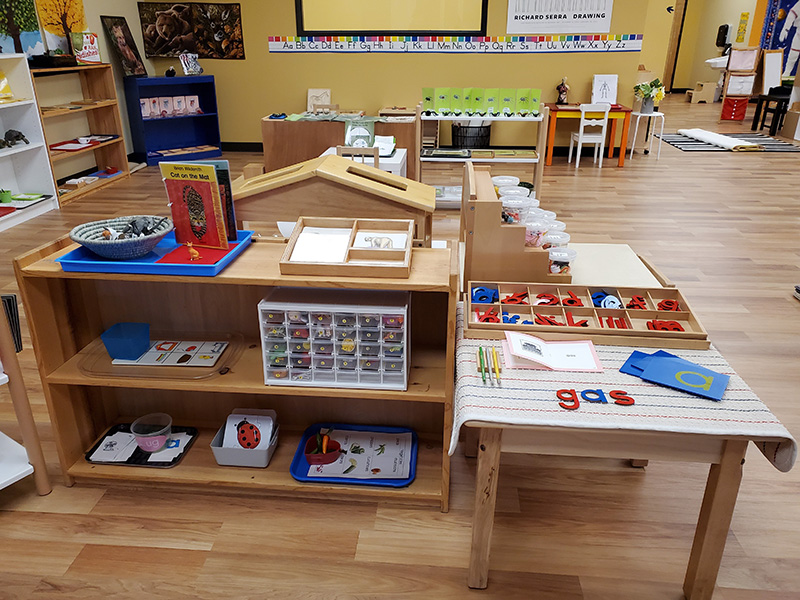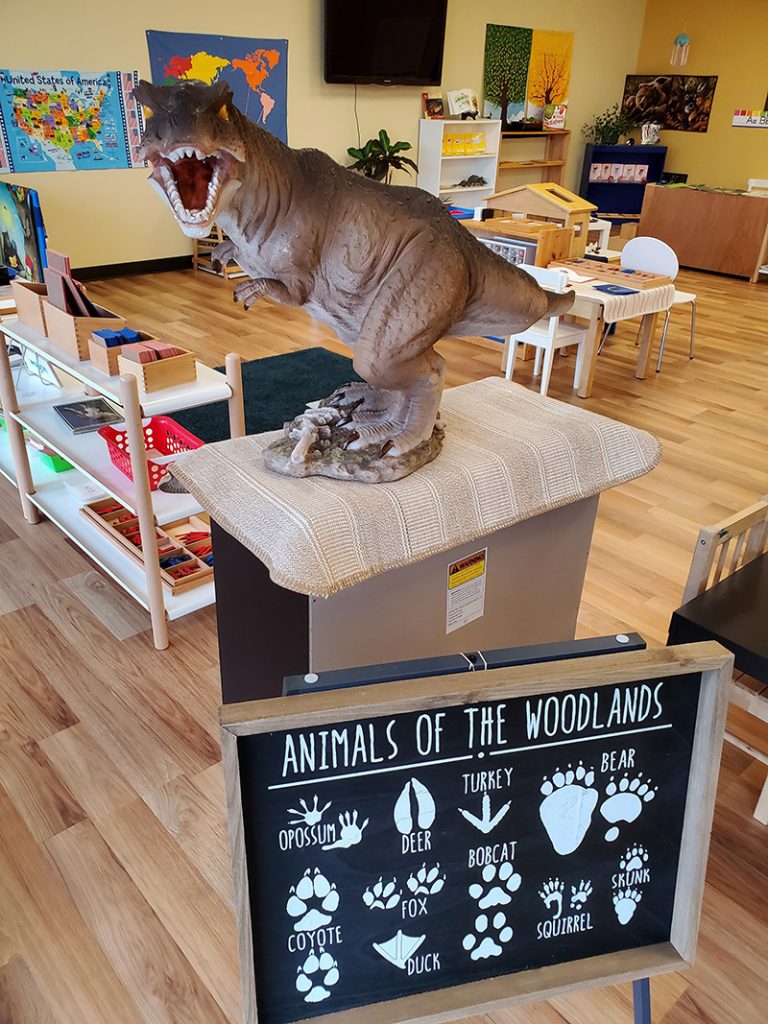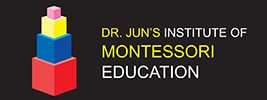Montessori Curriculum
Practical Life

What is special about centre
Vision & Mission Statements
-

Our Mission
We believe in the ability to improve the quality of life of the individuals and families across the city.
-

Our Vision
Our vision for Early Years is based upon the premise that every child receives the very best education.
-

Philosophy
We believe that a teacher-guided, balanced approach establishes an excellent educational foundation.
Core Curriculum Areas
Every day at our school, we provide children with opportunities to grow their confidence, skills and decision-making abilities across several important areas. At every age level, students learn in different ways at different rates and so they learn much more effectively from direct, hands-on experiences. All lessons are presented individually, through hands-on activities in a sequence from the concrete to the abstract.
-
Practical Life
Children are offered real life experiences where they learn how to care for themselves and the environment around them. The children come away from these tasks with an understanding of how to accomplish these tasks and the confidence to continue to do so. Activities can include having children pour their own beverages, water the plants in the classroom, and keeping our shared space organized. Children also learn the healthy manners of taking turns, waiting to do the "work" they desire, taking constructive feedback in a positive way, and being thoughtful of another child's feelings and needs.
-
Sensorial Activities
In this area of learning, we use the children's senses to help them become more logical, aware and perceptive. Sensorial activies can include working with visual shapes, using different instruments to work with sound, a tasting tray to experience different tastes, bottles for smelling, and mystery bags for tactile exercises.
-
Mathematics Curriculum
We provide a series of activities to develop your child's mathematical mind. Learning begins with the child’s use of concrete materials to lay a solid sound foundation in mathematic and geometry. Using Montessori materials the students are introduced to the basic math concepts of associating quantities to numerals.
-
Music Curriculum
We teach the fundamentals of music through vocal, instrumental, movement, and listening skills. The curriculum consists of singing, playing instruments, listening to music, music theory, creative movement, music history, and multi-cultural music experiences with Montessori Bells.
15

Years of experience
142

Students Enrolled
24

Qualified Teachers
12

Total Groups
Professional and graduated
Our Staff are Guided by the Principles of
Above and beyond our already stringent code of ethics and guidelines for continuing education, our professional staff are guided by the principles and ethical codes of the following clinical and educational organizations:
-
American Speech & Hearing Association (ASHA)
-
Bell Academy for Listening and Spoken Language
-
American Physical Therapy Association (APTA)
-
Audiology Foundation of America
-
American Board of Audiology


Practical Life
The purpose of these activities focus on eye-hand coordination, sense of order, concentration and independence. Dr. Montessori realized the coordination of muscles, the harmonious carrying out of movement, and the capacity for refinement has all assisted the full development of a child’s mind.
These exercises build neurological pathways and the child prepares the foundational tools for the reasoning mind.
Sensorial
Activity associated with the sensorial materials support all the sensitive periods in some manner but are geared to the sensitive periods of order and the refinement of sensory perceptions. The child meets all the keys to the exploration of the physical world.
A child in a Montessori environment also builds their powers of intelligence, such as discernment of similarities and differences, memory, classifications, capacity for vocabularies and categorization, and strategies of making order.

In addition, a Montessori environment uses an experimental approach to expose a child to beautiful art and music. For example, children are exposed to art by a variety of well-known artists particularly. A child may look at an art print of a work by Monet or Renoir and discuss what they see with the teacher. These art prints are a natural part of the prepared Montessori environment that provides opportunities for children to develop a sense of appreciation and aesthetics.

Mathematics
A child discovers the wonderful world of numbers. Quantities that can be built and manipulated physically as a means to counting, but also to carrying out the four mathematical operations (decimal system). Dr. Montessori had an astounding discovery-if the young children could count to ten, they were ready for an introduction to the decimal system! (Montessori Method, p.182) Dr. Montessori developed the golden beads, which represent the hierarchies of the decimal system from the “units to the thousands” or the later representation of these hierarchies with Stamp Games, Dot games, and Bead Frames and so on.
Language
Dr. Montessori said, “Language is truly the expression of a kind of super intelligence.” The Developmental sequence for writing and reading; when a child reveals the Sensitive periods or Absorbent Mind for the language; starts with Oral language, Nursery Rhymes, Symbolic development, Classification, Sequence, Sequence with Relationship, and Opposites.
The writing developmental sequence is the Moveable Alphabet, Three Letter Phonetic words, Sentences, Sand Paper letter and Moveable Alphabet, Picture, Blending, Patterned vocabulary, Composition, Phases/Sentences/Moveable Alphabet, Preposition, Sentence Strips and so on.

Science
Geology is a shocking experience for 2.5 – 6 years old children in a Montessori classroom. They explore a variety of rocks. The layers of the earth are introduced: Inner core, the outer core, Magma, and Earth surface. They explore fossils, how and when it was made? Experiment of the Volcano Eruption: sorting the different rocks that formed after volcano eruption.
Prehistoric animals such as dinosaurs are very popular to the children. They love to learn about Tyrannosaurus, Brachiosaurus, and Triceratops. They will explore matching cards for Dinosaurs, books about Dinosaur fossils and foot prints resources. Children can divide the dinosaurs into types: three toes dinosaurs were the meat eaters while five toes were presumed the plant eaters. Drawing the dinosaurs would be exciting!
Children also explore geography by observing different types of land and water forms which were designed using the water or clay for the land forms.
For example, island – lake, bay – cape, peninsula – gulf, Strait – isthmus. They will use Land Water Hemisphere Map, Continents Puzzle Map, to learn about North America, South America, Asia, Europe, Africa, and Australia.
In History, when children celebrate their birthdays in a Montessori classroom, the process involves several aspects of learning. Many Montessori teachers use a ritual to mark a child’s birthday. Often, this ritual involves a lit candle, which represents the sun. The children gather in a circle while carrying a small globe of the earth. This represents the orbit of the earth around the sun, each complete circle the equivalent of one “year” of life.
In addition, parents are invited to write a little “story” of landmarks for each year of the child’s life, which the teacher (or parent) reads as the child walks one circle for each year of his or her life. The birthday child senses the passage of time in his or her life, and each child’s importance as a part of the universe.

